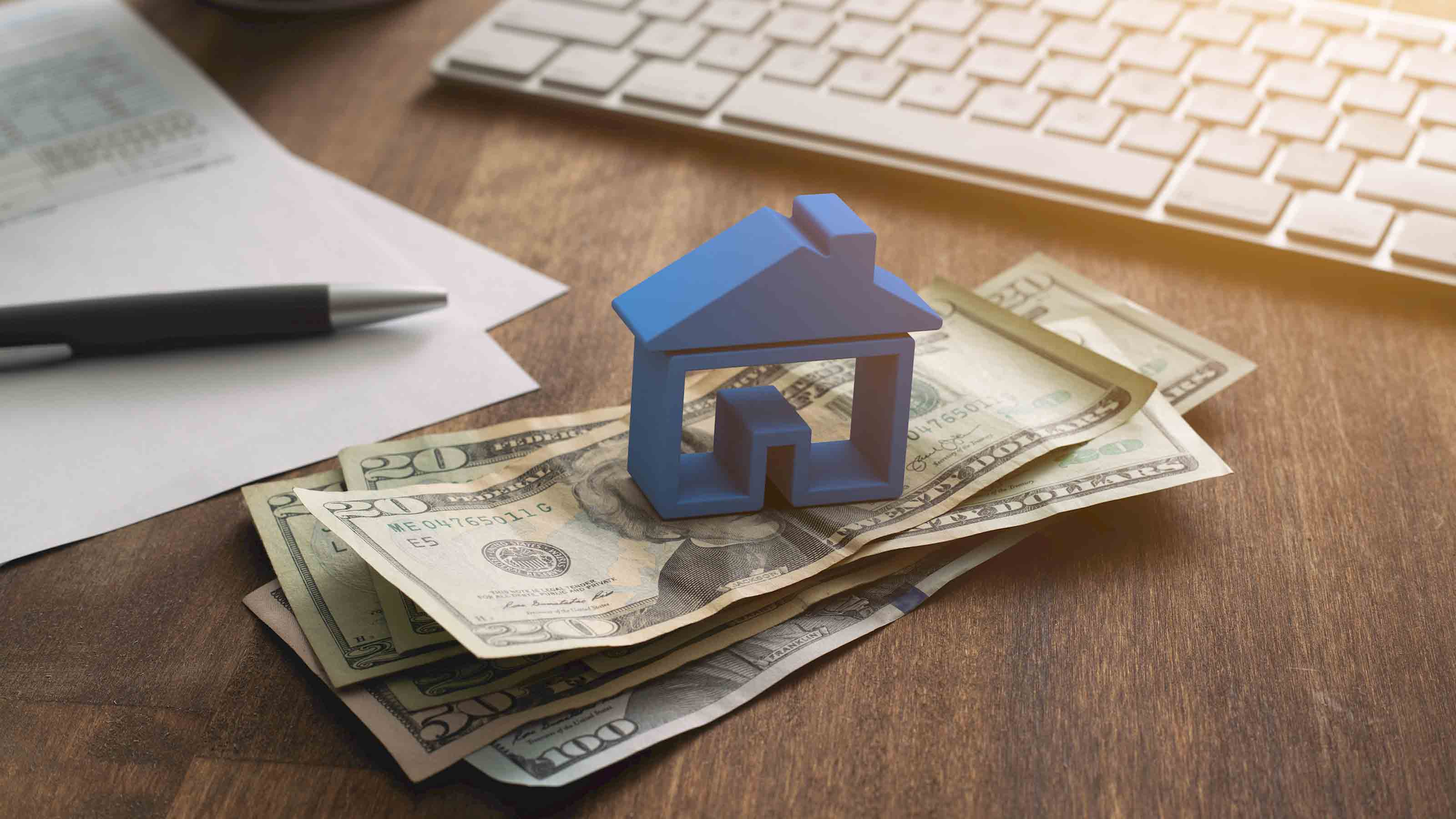Cash In on a Housing Revolution
COVID-19 will change home buying for the better, in part by creating more homebodies.


The Dow Jones industrial average posted its best quarter in 33 years on June 30, rising 17.8%. Big deal. Over the same period, the S&P Homebuilders Select Industry index was up 47.6%. The sector was devastated by COVID-19, and it is almost certain that builders’ revenues and profits will decline in this year of high unemployment and stay-at-home orders. But stock prices reflect expected, not current, earnings. Investors are looking to the future, and they like what they see. In fact, we may be on the brink of a housing revolution.
COVID will change the home-buying landscape for the better, in part by creating more homebodies. During the epidemic, homes became the center of nearly all family activity—recreation, entertainment, dining, education and work. Equity in a family home is the number-one asset for households, accounting for about one-third of net worth, collectively. If I’m right, it will represent a larger proportion in the years ahead.
By a three-to-two margin, Americans told Gallup in April that they prefer to keep working from home after the pandemic is over rather than going back to the office. If you telecommute, you can live anywhere, so you can afford a bigger place, beyond the city and close-in suburbs. A Harris Poll found that one-third of respondents said they were considering a move to a place less densely populated.
From just $107.88 $24.99 for Kiplinger Personal Finance
Become a smarter, better informed investor. Subscribe from just $107.88 $24.99, plus get up to 4 Special Issues

Sign up for Kiplinger’s Free Newsletters
Profit and prosper with the best of expert advice on investing, taxes, retirement, personal finance and more - straight to your e-mail.
Profit and prosper with the best of expert advice - straight to your e-mail.
Exodus to the country. According to the National Association of Realtors, buyers want to move farther out so they won’t be so close to neighbors who might be infected, now or in the future (see Timely Reasons to Buy a Vacation Home). The mayhem that followed police violence this spring has also led to some disenchantment with urban living, but the nation’s three largest metropolitan areas—New York, Los Angeles and Chicago—were already losing population. Moving to the exurbs and buying a bigger house with entertainment rooms, giant kitchens, pools and separate home offices for spouses are trends that builders have to love.
Of course, you probably can’t move to a bigger house if you are out of work, and with unemployment running in double digits and the economy’s future uncertain, it is understandable that home sales have taken a tumble. But an index of pending sales of previously owned homes jumped 44.3% in May compared with April, a sign that residential real estate is bouncing back.
The fundamentals are certainly in place. Interest rates are among the lowest ever. In mid July, the average rate on a 30-year fixed-rate mortgage was just 2.98%; on a 15-year, 2.48%, according to Freddie Mac.
Another reason that I believe the stocks of U.S. homebuilders are worthy of consideration now is that shares of these companies are relatively cheap. Despite the price jump in the second quarter, the S&P Homebuilders index over the five years through June 30 has returned an annual average of more than five percentage points less than the S&P 500 over the same period.
A house may be Americans’ biggest asset, but the firms that build houses are smallish. The 10 largest publicly traded builders had combined sales last year of about $80 billion, roughly the same as big-box retailer Target. The market cap of the largest homebuilder, Lennar, is just $18 billion.
Most builders are regional, and economies of scale from production or marketing are minimal. Homebuilders have to build houses one by one and sell them, either individually or in relatively small communities. Profitability often depends on how savvy a company has been in its purchases of land or building lots, how wisely a firm borrows, and how well it times construction to meet demand. Those are factors that the average investor can’t really analyze. As a result, I believe the best strategy is to invest in homebuilders that are doing business in booming parts of the country and have long-term records of rising revenues, good balance sheets and shares trading at attractive prices—at a time when the economy is beginning a growth spurt (as it might be now).
What to buy. Homebuilder NVR (symbol NVR, $3,271) meets all these criteria. NVR builds in hot pockets of the mid Atlantic, South and Midwest. It’s managed in a prudent way, acquiring lots that are already finished and ready for building (rather than speculating in raw land) and then constructing a new house only when it has been sold in advance. Revenues and net income have risen steadily over the past five years. COVID-19 will almost certainly cause sales and earnings to fall in 2020, but NVR should get back on track again in 2021. (Prices and other data, unless otherwise noted, are through July 10; stocks and funds I like are in bold.)
NVR stock took a big hit earlier this year, falling by nearly half within a month; it has bounced back but remains well off its February high. This is one of those classy companies that always seem too expensive to buy. Now is a good time. NVR trades at 17 times estimated earnings for the year ahead—high for the sector but reasonable for such a stellar performer. The firm has an impressive balance sheet, with $1.1 billion in cash and $682 million in debt at the end of the most recently reported quarter. (Compare that with Lennar, which has $1.4 billion in cash and $7.5 billion in debt.)
In addition to NVR, with its market capitalization (stock price times shares outstanding) of $12 billion, I like four stocks with market caps of about $2 billion to $3 billion. Meritage Homes (MTH, $79) is a Sun Belt builder based in Phoenix with a record of sparkling earnings and revenues, though both will probably fall in this pandemic year; the price-earnings multiple is 11. TRI Pointe Group (TPH, $15), which builds mainly in the West, lost two-thirds of its value in the COVID crash, then recovered most—but not all—of the lost ground. The stock trades at a P/E of 9.
Taylor Morrison Home (TMHC, $22), another fast-growing Arizona-based builder, has a riskier profile. Analysts expect earnings to fall sharply this year, then rebound in 2021. The company, founded in 1936, has a shakier balance sheet than Meritage’s and TRI Pointe’s, but shares, down 24% from their high, are modestly priced. Similarly, LGI Homes (LGIH, $102), which builds a range of houses running from starter to luxury homes in regions including the Northwest and South, has heavy debt in relation to cash but powerful earnings and revenue growth.
Most of the exchange-traded funds in the sector are unsatisfying. Despite its name, SPDR S&P Homebuilders has only a smattering of builders in its top holdings and is instead populated with building suppliers and makers of carpets and appliances. A fund called iShares Residential Real Estate has no builders at all among its 25 largest holdings; its portfolio favors health care, apartment and storage real estate investment trusts. By contrast, builders make up the majority of the asset value of iShares U.S. Home Construction (ITB, $45). Although the fund also owns shares of companies such as Sherwin-Williams and Home Depot, it is the best of the ETFs—and worth a look if you prefer funds to individual stocks.
The truth is, when it comes to residential real estate, your best bet is your own home. You can’t beat the leverage, the tax breaks and the consistent returns. But a strong second-best is the stock of homebuilders—especially now, on the brink of what could be a housing revolution.
James K. Glassman chairs Glassman Advisory, a public-affairs consulting firm. He does not write about his clients. He owns none of the stocks mentioned. His most recent book is Safety Net: The Strategy for De-Risking Your Investments in a Time of Turbulence.
Profit and prosper with the best of Kiplinger's advice on investing, taxes, retirement, personal finance and much more. Delivered daily. Enter your email in the box and click Sign Me Up.

-
 Stocks Chop as the Unemployment Rate Jumps: Stock Market Today
Stocks Chop as the Unemployment Rate Jumps: Stock Market TodayNovember job growth was stronger than expected, but sharp losses in October and a rising unemployment rate are worrying market participants.
-
 Should You Renew Your CD?
Should You Renew Your CD?With rate cuts impacting earnings, we examine if now is a wise time to renew CDs.
-
 7 Ways to Plan Now to Save on Medicare IRMAA Surcharges Later
7 Ways to Plan Now to Save on Medicare IRMAA Surcharges LaterUnderstand the critical two-year lookback period and why aggressive planning before you enroll in Medicare is the most effective way to minimize IRMAA.
-
 Stocks Chop as the Unemployment Rate Jumps: Stock Market Today
Stocks Chop as the Unemployment Rate Jumps: Stock Market TodayNovember job growth was stronger than expected, but sharp losses in October and a rising unemployment rate are worrying market participants.
-
 Stocks Struggle Ahead of November Jobs Report: Stock Market Today
Stocks Struggle Ahead of November Jobs Report: Stock Market TodayOracle and Broadcom continued to fall, while market participants looked ahead to Tuesday's jobs report.
-
 AI Stocks Lead Nasdaq's 398-Point Nosedive: Stock Market Today
AI Stocks Lead Nasdaq's 398-Point Nosedive: Stock Market TodayThe major stock market indexes do not yet reflect the bullish tendencies of sector rotation and broadening participation.
-
 Dow Adds 646 Points, Hits New Highs: Stock Market Today
Dow Adds 646 Points, Hits New Highs: Stock Market TodayIt was "boom" for the Dow but "bust" for the Nasdaq following a December Fed meeting that was less hawkish than expected.
-
 Dow Rises 497 Points on December Rate Cut: Stock Market Today
Dow Rises 497 Points on December Rate Cut: Stock Market TodayThe basic questions for market participants and policymakers remain the same after a widely expected Fed rate cut.
-
 JPMorgan's Drop Drags on the Dow: Stock Market Today
JPMorgan's Drop Drags on the Dow: Stock Market TodaySmall-cap stocks outperformed Tuesday on expectations that the Fed will cut interest rates on Wednesday.
-
 Stocks Slip to Start Fed Week: Stock Market Today
Stocks Slip to Start Fed Week: Stock Market TodayWhile a rate cut is widely expected this week, uncertainty is building around the Fed's future plans for monetary policy.
-
 Stocks Keep Climbing as Fed Meeting Nears: Stock Market Today
Stocks Keep Climbing as Fed Meeting Nears: Stock Market TodayA stale inflation report and improving consumer sentiment did little to shift expectations for a rate cut next week.